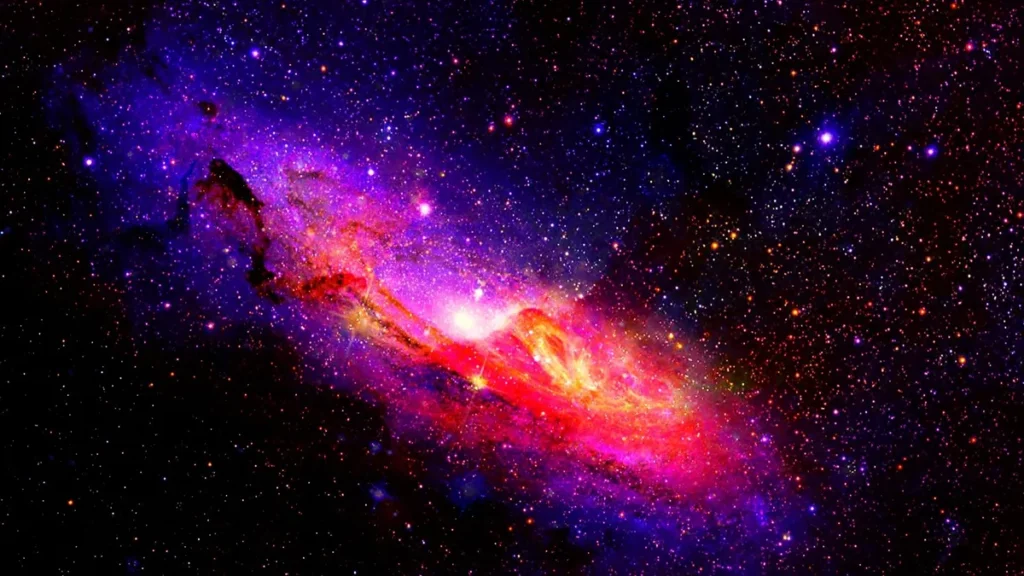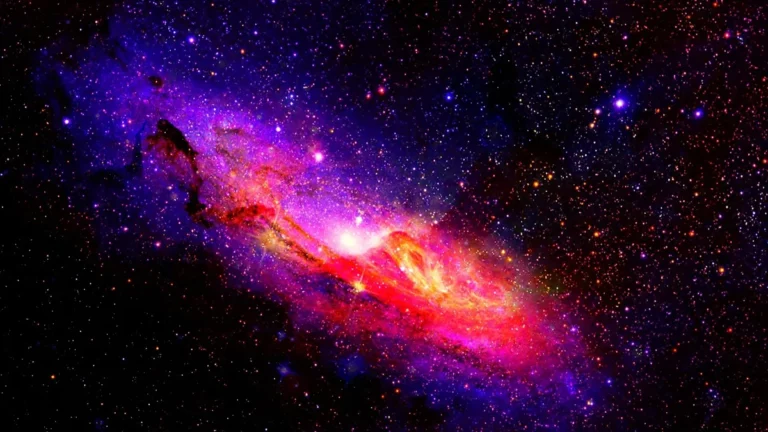This 3-Billion Light-Year Long Galaxy Chain Could ‘Overturn Cosmology’
For a long time, scientists have thought the distribution of matter was evenly spread throughout the observable universe. It’s the bedrock of cosmology. Or so we thought.
Researchers discovered a colossal arc of galaxies that spans an unconscionably vast distance of more than 3 billion light-years in a distant corner of the universe, according to a virtual briefing of the American Astronomical Society on June 7.

This could fundamentally “overturn cosmology as we know it,” said Alexia Lopez, a cosmologist at the virtual briefing, in a Science News report. “Our standard model, not to put it too heavily, kind of falls through.”
The ‘Giant Arc’ of touching galaxies would span twenty times the moon’s width in the night sky
The “Giant Arc”, as Lopez and her colleagues at the University of Central Lancashire in Preston, England call it, was observed via the studying of light from roughly 40,000 quasars, during the Sloan Digital Sky Survey. Quasars are thought to be nightmare-provokingly large supermassive black holes actively feeding at the center of a galaxy. And this massive feeding frenzy creates a light so bright that it can be seen at greater distances than almost any other phenomenon can. But while the quasar-borne light is in transit to Earth, some of it is absorbed by atoms in and around the galaxies in our relative foreground, in an aggregation of specific signatures in the light’s pattern. And when it reaches astronomers’ telescopes, they can tell.
The signature of the Giant Arc lies in magnesium atoms that’ve lost a single electron, while passing through the halos of galaxies roughly 9.2 billion light-years away. Interpolating the quasar light absorbed by the atoms, the astronomers uncovered a picture of a symmetrical curve of dozens of galaxies, stretching roughly one-fifteenth the radius of the entire observable universe. Obviously, this structure is invisible to the naked eye, but if we could see it in the night sky, the arc of interpenetrating galaxies would span roughly 20 times the full moon’s width. Twenty times!
‘Tantalizing’ evidence for a ‘Giant Arc,’ but not convincing enough for some
“This is a very fundamental test of the hypothesis that the universe is homogeneous on large scales,” said astrophysicist Subir Sarkar at the University of Oxford, who researchers colossal structures of the cosmos, but wasn’t involved in the recent work, in the Science News report. If the Giant Arc of the distant universe is confirmed, “this is a very big deal.” But Sarkar has doubts. “Our eye has a tendency to pick up patterns,” and some people have even unswervingly bizarre claims, like seeing Stephen Hawking’s initials written in fluctuations of the cosmic microwave background. This would make Stephen Hawking’s initials as old as the oldest light in the universe. Which is absurd.
To determine the odds of galaxies lining up in such a gigantic cosmic march, Lopez executed three statistical tests, and all of them suggested it was no delusion. In fact, one of the tests surpassed the gold standard of physicists: when the chances of an observation being a statistical exception are less than 0.00003 percent. This is impressive, but not convincing enough for Sarkar. “Right now, I would say the evidence is tantalizing but not yet compelling,” he said in the Science News report.
As Sarkar said, this is a big deal. But until additional observations are made to further confirm or falsify Lopez and colleagues’ Giant Arc hypothesis, we shouldn’t throw the whole of cosmology out the window. Even if it turns out to be a fluke, the reality of facing paradigm-shattering discoveries in modern astronomy is a testament to the staggering pace of the field.
Source:InterestingEngineering
Do not forget to share your opinion with us to provide you with the best posts !




0 Comments